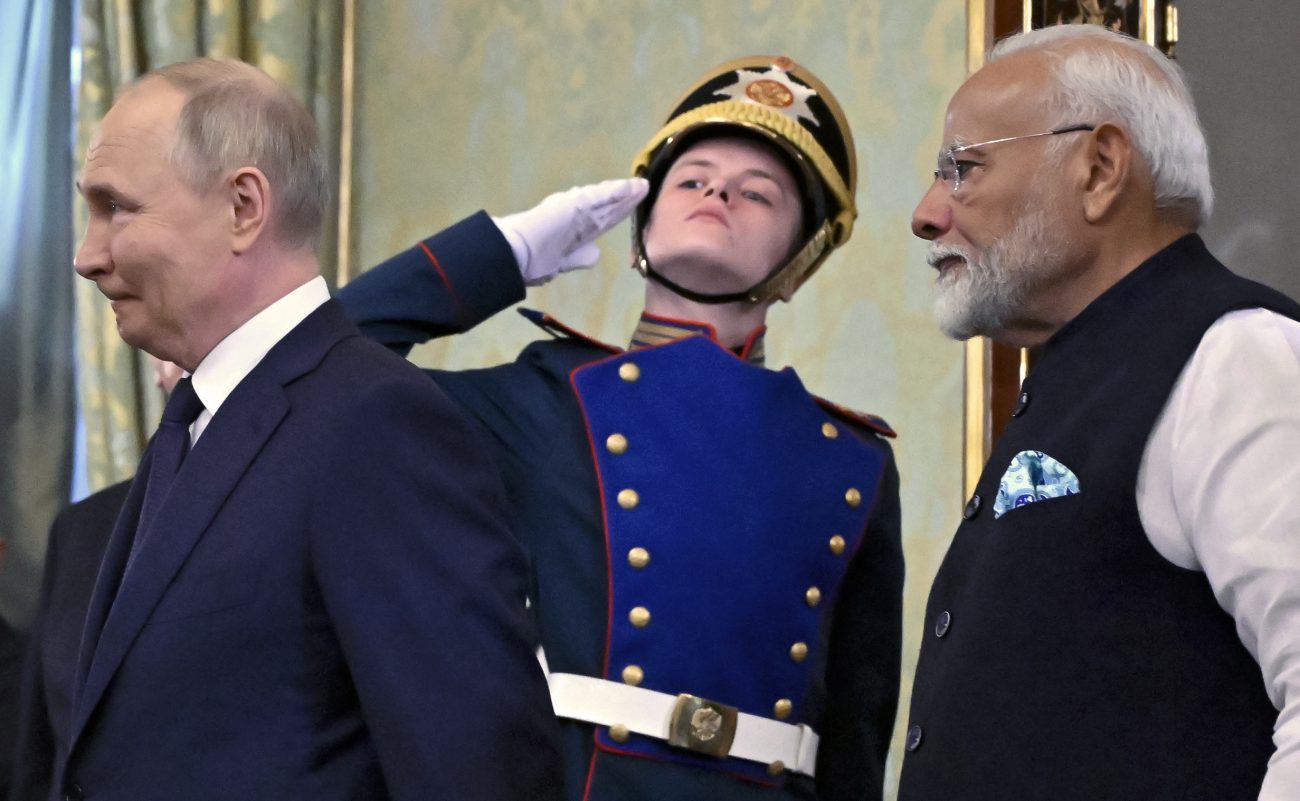US President Donald Trump’s harsh criticism of India’s trade and military ties with Russia and threat of additional tariffs appears to have failed to achieve its desired goal. Instead of scaling back ties, India and Russia have reaffirmed plans for the exploration of the strategic Northern Sea Route (NSR).
Earlier this month, Trump imposed a 25% tariff on Indian goods and threatened to double it to 50% in an attempt to dissuade the South Asian country from buying Russian crude oil and arms.
The additional tariff, slated to come into effect on August 27, would make its $85 billion in annual US exports uncompetitive and unviable. The White House states it is part of US efforts to end the grinding Ukraine war, fueled by New Delhi’s imports of Russian oil.
Refusing to be browbeaten by Washington, saying the tariffs are “unreasonable,” and has defended its right to purchase crude from the least expensive supplier, indirectly signaling that it is not going to reduce, much less end, the oil purchase.
Amid the looming threat of additional tariffs, Russian First Deputy Prime Minister Denis Manturov announced that Russia and India target joint exploration of the Northern Sea Route and the North-South corridor.
The announcement was made at the 26th meeting of the India-Russia Intergovernmental Commission on Trade, Economic, Scientific, Technical and Cultural Cooperation on August 20, which was attended by S. Jaishankar, India’s Minister of External Affairs (MEA).
“It is obvious that the expansion of trade and economic ties is also linked to forming reliable logistical corridors and creating new container services. We target joint development of the Northern Sea Route and the North-South Corridor in this regard,” Manturov, highlighting the scale of trade between the two countries.
NSR is a shipping route that runs along Russia’s Arctic Coast and has the potential to significantly reduce transit time between Russia and Asia. Meanwhile, the International North-South Transport Corridor (INSTC) is a multi-modal transportation project aimed at connecting India and Russia via Iran.
It is a 7,200-kilometer route– a combination of sea, rail, and road–to facilitate trade and transport between South Asia and Northern Europe.
India’s collaboration with Russia on NSR is not new, and is part of a wider Indian interest in the Arctic, aimed at diversifying trade routes for faster and cheaper facilitation of the supply of Russian oil, coal, and liquefied natural gas.
In 2023, Sarbananda Sonowal, the Minister of Ports, Shipping & Waterways met with the Minister of the Russian Federation for the Development of the Far East and the Arctic, Mr. A.O. Chekunkov, and discussed the “possibility of usage of new transport corridors like the Northern Sea Route (NSR) as well as the Eastern Maritime Corridor (EMC) between Vladivostok and Chennai.”
In July 2024, during Prime Minister Narendra Modi’s visit to Russia, the two sides endorsed collaboration in developing shipping between Russia and India through the Northern Sea Route and expressed their readiness to establish a joint working body within the IRIGC-TEC to facilitate this cooperation.
Later that year, the first meeting of the India-Russia working group on NSR cooperation was held in New Delhi in October. The two sides discussed cargo transit targets, joint Arctic shipbuilding projects, and training Indian sailors for polar navigation. A draft memorandum of understanding was also prepared to foster cooperation in cargo shipping along the NSR.
What Is The Northern Sea Route (NSR)
The Northern Sea Route (NSR) is a shipping route that connects the Atlantic and Pacific oceans in the Arctic. It runs along the Russian Arctic coast, significantly reducing the distance between Asia and Europe compared to traditional routes like the Suez Canal.
As compared to the Suez Canal route, the estimated shipping through the NSR will reduce the distance between Shanghai and Rotterdam (Europe’s largest commercial port in the Netherlands) by almost 2,800 nautical miles or by 22%. This route is also likely to reduce the transportation cost by 30 to 40%, as previously explained by the EurAsian Times.
Similarly, it would cut the transit time from 32-35 days to 12-15 days for routes like Chennai-Vladivostok. It is pertinent to note that the Chennai-Vladivostok Eastern Maritime Corridor is a maritime route covering approximately 5,600 nautical miles that leverages the NSR for part of its journey, but is tailored to connect India’s eastern coast with Russia’s Pacific port. Sarbananda Sonowal said in November 2024 that the corridor had become operational and was carrying oil, food, and machines.
“India’s interest in the NSR hinges on developing the Chennai-Vladivostok Eastern Maritime Corridor, which promises to reduce India-Europe travel time by two weeks,” as noted by the ORF think tank in an article published last year.
Moscow is promoting the NSR as an alternative global shipping route, which has emerged as a strategic priority for Russian President Vladimir Putin because it is crucial for linking its eastern trading partners when the country is reeling under sanctions and economic difficulties. Russian analysts say that while an estimated 12% of world maritime trade passes through the Suez Canal, the route must not be made indispensable.
The development and use of this route would lower shipping costs, reduce fuel consumption, and ensure faster delivery of goods, which means it will also benefit India’s trade in energy, commodities, and manufactured goods.
Russia is India’s top oil supplier, providing 35-40% of its crude, alongside LNG and coal. The cultivation of NSR as a shipping route would offer a reliable, shorter route for these imports, ensuring uninterrupted energy supplies, especially amid disruptions in traditional routes in the wake of hostilities in the wider West Asian region. Additionally, it would reduce India’s dependence on geopolitically volatile chokepoints like the Strait of Malacca. As of now, nearly 80% of India’s oil imports pass through this strait and the Red Sea.

The development of NSR is also based on the evolving geopolitical situation. As a major participant in Arctic trade, China is actively collaborating with Russia on NSR-related initiatives. India can offset China’s expanding influence in the Arctic by participating in the NSR through joint ventures and cargo transit agreements with Russia, a move that would be consistent with its larger Indo-Pacific strategy.
The NSR is getting easier to navigate as ice-free periods extend due to the melting of Arctic ice brought on by climate change. India’s involvement in NSR development will enable it to take advantage of Russia’s icebreaker fleet, which is the largest in the world, enabling year-round navigation while also adapting to shifting global trade patterns.
Last year, Russia chose India over China for its non-nuclear icebreaker construction program, as previously reported by the EurAsian Times. The Indian government was known to be in talks with two shipbuilders—one state-owned and the other private—to construct four non-nuclear icebreaker ships valued at over Rs 6,000 crores ($750 million).
Russian state nuclear corporation ROSATOM and Indian partners have been exploring ways to develop the transit potential of the Northern Sea Route (NSR), mainly for facilitating the supply of Russian oil, coal, and liquefied natural gas.
The fact that this is happening despite US threats signals that India is prioritising its economic interests instead of alignments.
If anything, India seems to be determined to keep the trade ties with Russia intact. The continued interest in the NSR suggests that India is not interested in scaling back its oil purchase despite continued pressure from Washington. Like Manturov said, “expansion of trade and economic ties is also linked to forming reliable logistical corridors and creating new container services.”
Russia Backs India Against the US On Trade
Donald Trump’s hostility seems to be working in Russia’s favour.
The Russian Deputy Chief of Mission, Roman Babushki, recently said at a press conference that if India faced trouble exporting to the US (in the wake of the new tariffs), it is welcome to export its products to Russia instead.
“The sanctions are hitting those who are imposing them. It is a challenging situation for India, but we have trust in our ties. We are confident that India-Russia energy cooperation will continue notwithstanding the external pressure,” he stated. Russia is the biggest supplier to India of crude oil. And India’s demands are growing year by year. Certainly, this is a perfect case of mutual accommodation and complementarity of our economies. We are quite certain that our cooperation will continue.”
India, too, has refused to be bullied by the US, saying the discounted Russian oil is essential for energy security for India’s 1.4 billion population. Moreover, India’s resistance is based on the simple premise that other countries, including China and NATO countries like Turkey, also purchase cheap Russian oil.
Moreover, the European Union’s trade with Russia stood at $77.9 billion in 2024, significantly higher than India’s $68.7 billion.
By Trump’s logic, its allies in the West that are arming Ukraine are also simultaneously fueling Putin’s war.
India’s foreign policy prioritizes strategic autonomy, resisting external pressure to maintain ties with long-standing partners like Russia. Caving to US demands could weaken India’s global standing and fracture its internal polity at a crucial time when the country has recently emerged from a conflict that saw bipartisan support for its war effort.
India also seems to be hedging against US tariffs by strengthening ties with Russia and China, as evidenced by Modi’s planned visit to China.



